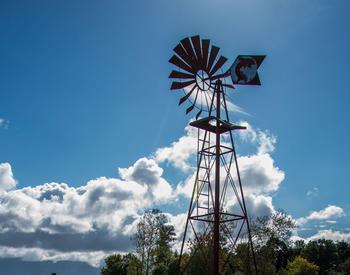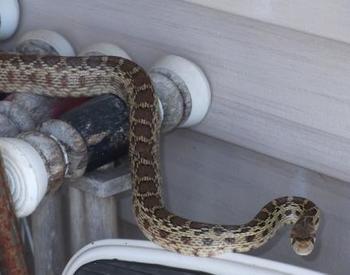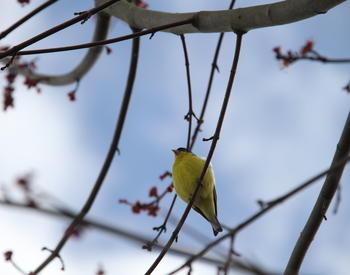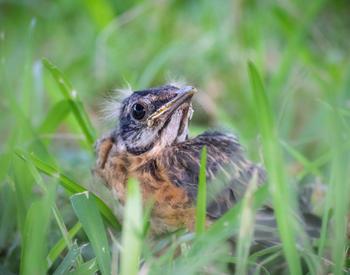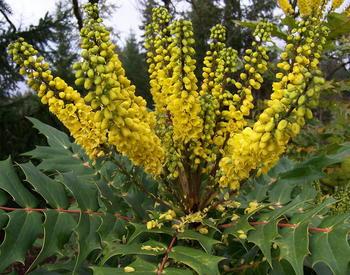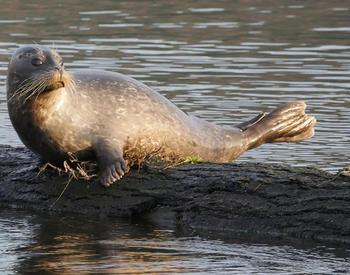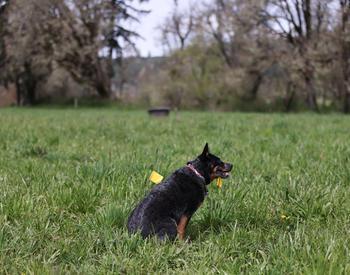Autumn is a great time to watch and learn about Oregon’s native western gray squirrel (Sciurus griseus), known also by the name “silver-gray.” Because these squirrels don’t hibernate, they spend much of the fall gathering and storing food for the coming cold months.
In Oregon, the western gray squirrel is declining in numbers and is listed as a sensitive species. In Washington, the species is listed as threatened – biologists are concerned with its possible extinction there. Competition with other species and loss of oak woodlands and older trees may be contributing to their decline.
The western gray squirrel is the largest tree squirrel in Oregon. They are silvery gray, with a white belly. White tips on their gray hairs give them a silvery appearance. They have a bushy, silvery gray tail with black hairs. Adults weigh between 18 to 33 ounces. They can be as long as two feet, including their tail. They have tough, curved claws and strong legs for tree climbing and leaping.
The eastern gray squirrel, introduced in 1919 to Oregon’s state capitol, looks a lot like the western gray squirrel, except it is slightly smaller and has a reddish tinge to its fur in the summer. Both species of squirrels are ecologically similar and use the same resources for food and nesting.
Eastern gray squirrels can be found in most urban areas in Oregon and in areas with nut orchards. They are known to be more aggressive than the native western gray squirrels. Eastern squirrels are fond of birdseed and often raid feeders. They can be troublesome for homeowners by getting into attics and digging up flowerbeds. Western gray squirrels need all the help they can get.
Here’s some advice from the OSU Extension 4-H Wildlife Stewardship Program about how to maintain and create habitat for them.
If you have oak trees in your habitat area, that’s a good start. If not, other trees that produce seeds or nuts, such as maple, walnut, hazelnut, spruce, sugar pine, ponderosa pine and lodgepole pine are also suitable.
Provide shelter for western gray squirrels by leaving large trees and dead or dying trees, as long as they do not pose a safety hazard. If woodpeckers make cavities in these trees, squirrels can nest in them after the woodpeckers leave.
It is best not to feed squirrels. Feeding squirrels can attract the nonnative eastern gray squirrel rather than the more shy native western gray squirrel. Too many squirrels in one area can drive away birds and other desirable wildlife.
Oregon’s western gray squirrels are often heard before they are seen. Chewed nutshells and pinecone scales scattered beneath a tree is a likely sign that squirrels may reside up above in the canopy or in a hollow trunk.
Active in the daytime, western gray squirrels sleep at night. The best time to watch these native squirrels is an hour or two after sunrise. As the day warms up, squirrels spend more time resting. They may sprawl on their belly on tree limbs with their legs and tail dangling. Or they might sit on a limb with their tail curled over their back.
Western gray squirrels leave inch-long round tracks with four toe prints. The back feet leave 1/4-inch tracks with five toe prints. When a squirrel runs or hops, its trail has the hind prints in front of the fore prints.
Preferring wooded areas with lots of oak trees, western grays may also be found near streams and in forests where there are maples, tanoak, madrone, Douglas-fir, white fir, and pines. They also live in urban parks and orchards near forested areas.
Squirrels eat a variety of foods. They prefer fungi, acorns, and seeds from trees such as Douglas-fir, true firs, spruce, and pines. On a quiet day, you may hear a nibbling noise coming from high in a tree. If you look closely, you might find a squirrel holding a pine cone in his hands like a corn cob and chewing on it. In the summer, squirrels also eat green vegetation, berries, and insects.
Squirrels help new trees grow by storing nuts and seeds in the ground, hoping to eat them later. If they forget where they hid them, the seeds can sprout into new trees. Squirrels also help plants by eating aphids, a type of insect that can attack Oregon ash trees and cause a disease called leaf roll.
Squirrels can damage trees by chewing the bark when food is scarce.



